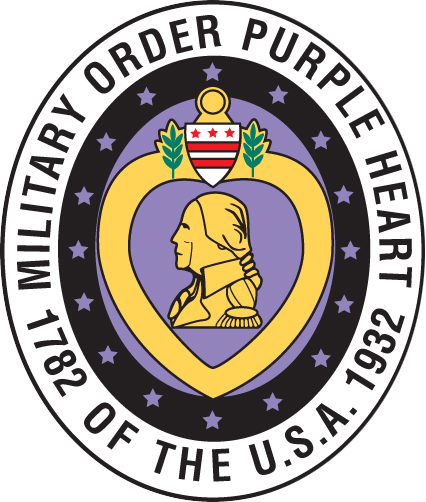Milton Carr was born in Clarksville, Texas in 1938. He grew up on a farm in North Texas in Archer County and graduated from Megargel High School in 1956. He then enrolled in Midwestern (State) University in Wichita Falls, and upon graduation there in 1960, was commissioned through the Army ROTC as a Second Lieutenant and ordered to active duty in the 2nd Armored Division at Fort Hood, Texas.
During the next twenty-nine years, he served in the various positions of command and staff that are normal for a career Army Officer and attended the appropriate service schools. He held command assignments from platoon through battalion; served in staff officer positions from battalion headquarters level up to Headquarters, Department of the Army in the Pentagon; and graduated schools from the Basic Officer Course up through the Armys Command and General Staff College.
He served in the 173rd Airborne Brigade in Vietnam, 1966-1967, participated with the brigade in the only combat parachute jump during that conflict, and was later wounded on an operation in War Zone C. During 1968-1970 he was at the University of Texas where he graduated with a Master of Science in Mechanical Engineering, and that experience led him to choose to return to Austin to retire.
He retired from an assignment in XVIII Airborne Corps in Fort Bragg, North Carolina in December 1988 to return here, where he is a member of several nationwide veterans organizations. He helped to start up, and serves as Adjutant of, the local Austin chapter of the Military Order of the Purple Heart, which, in less than 10 years, grew to become the largest in the nation.
Milt Carr is married to the former Barbara Youngblood of Bowie, Texas. They have three children and four grandchildren, currently all living in Texas or Missouri.
MILTON CARR, 173rd Airborne Brigade, Vietnam
In April 1966, I was a Captain with five years Army service, in 3rd Brigade, 101st Airborne Division at Fort Campbell, Kentucky. In those days Army policy called for Airborne replacements to Vietnam to come exclusively from stateside Airborne units (no replacements directly out of school). My orders were to report to Headquarters 173rd Airborne Brigade and I arrived sometime about April 13th as I recall.
The 173rd Airborne Brigade, officially nicknamed “the skysoldiers”, unofficially the herd”; occupied a Base Camp that doubled as part of the perimeter defense of the Vietnamese Air Force (VNAF) Base at Bien Hoa, about 25 miles North of Saigon. The practice at that time was to make airmobile lifts into Viet Cong controlled areas, conduct sweep operations through the zone for two to three weeks, then return to Bien Hoa Base Camp for a week or ten days of maintenance, refitting and training. During my year in Vietnam, the 173rd conducted 19 such operations and even when there were no big fights, there were always a few casualties on every operation. The Brigade only had two battalions of paratroopers, 1/503 and 2/503, so General Williamson had attached a battalion of the Royal Australian Regiment (RAR) with a battery of Royal New Zealand Artillery (RNZA) to make the 173rd a more robust force. Many close personal associations between Americans, “Aussies” and New Zealanders were formed there that endure today.
Although we were 100% parachute qualified, almost every combat operation would begin with an airmobile assault. Standard ten-ship companies of “Huey” helicopters lifted in as many six-man loads of Infantrymen as possible between dawn and dusk of the first day to start the operation. During the entire ten year experience of the Vietnam War, only one operation included a Combat Parachute Jump, and as luck would have it, I was there. One battalion Task Force composed of Lieutenant Colonel Bob Sigholtz’ 2/503 Infantry, a battery of Artillery, Signal and Engineer detachments, with a Brigade “Jump Command Post”, were allotted 780 parachutes. There were six Captains in the Brigade Operations Section at that time, and we drew straws to see which two of us would make the jump. Mine was one of the two “lucky” short straws. The Drop Zone, “AO Red”, near Katum in War Zone “C”, was a large patch of rice paddys surrounded by forest and only about two miles from the Cambodian border. Operation JUNCTION CITY started with the parachute assault at 9:00 A.M. on February 22, 1967 and you can read all about it in the March 10th issue of LIFE magazine.
Six weeks later, the 173rd Brigade was operating elsewhere in War Zone “C” and as usual, I was with the headquarters’ Tactical Operations Center (TOC) which at that time was at the Minh Thahn rubber plantation. We had flown into the tiny dirt airstrip that was originally built to serve the luxurious villa of the French plantation manager, and we had set up our command post inside the forest of rubber trees. Before midnight on April 5th the TOC area was mortared and I was one of six men from brigade headquarters that were wounded. All of us were flown out later in the night by Medevac helicopter “dustoff” to the MASH hospital at the base of Nui Ba Dinh (the black virgin) mountain. We were all operated on before daylight. Sergeant Bunij in the Fire Support Element was the most seriously wounded, having multiple shell fragments in the stomach, but the surgeons did a marvelous job and he survived. The Brigade Commander, “Uncle Jack” Deane, came to the hospital next day and pinned a Purple Heart on each of us six of his men. After brief stays in the hospitals at Vung Tau, Saigon, and Japan, I was Medevac’d home to Brooke Army Hospital in San Antonio. Barbara drove down from Wichita Falls and picked me up from Beach Pavillion one week exactly after I would have come home on normal rotation. It was my only tour in Vietnam, but, one year was enough.

